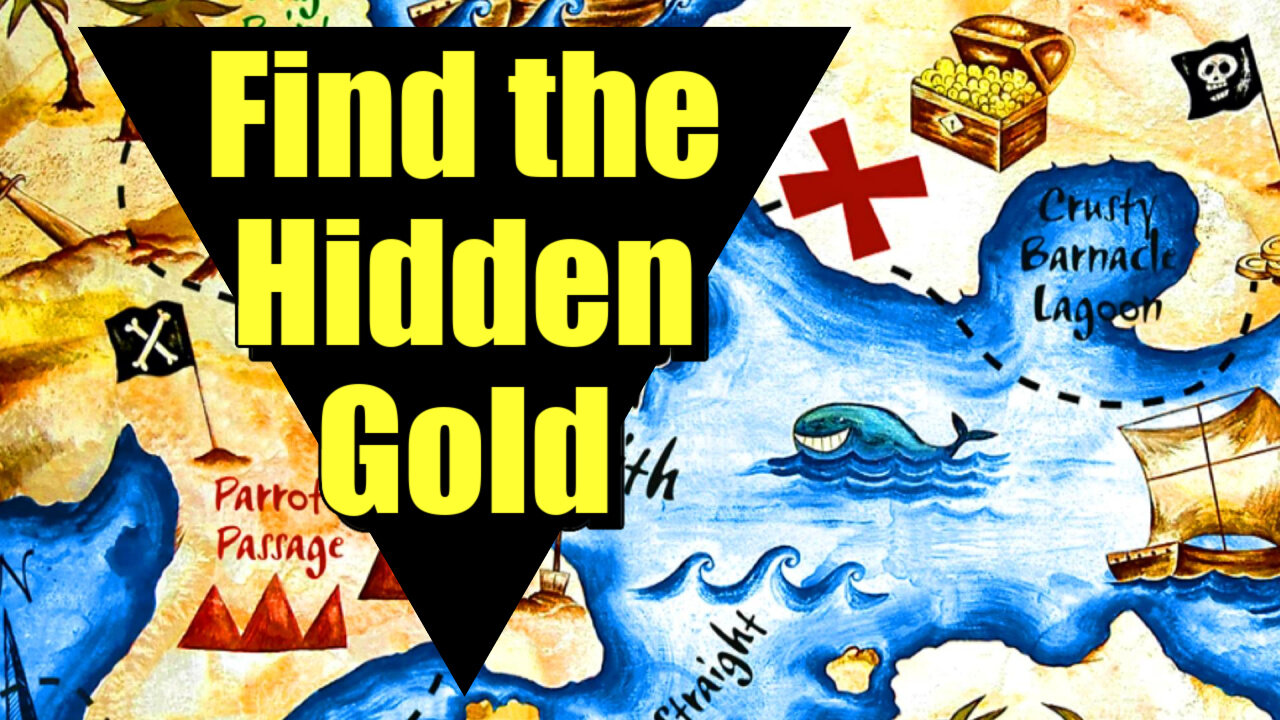Premium Only Content

Treasure Map of Hidden Gold - The Fortune of Father Crespi
After finding gold inside the South American bank vault, the thieves loaded it into black duffel bags. The missing artifacts included Sumerian figures, items carved with Egyptian heiroglyphs, and a golden ceremonial helmet crowned with the image of a stegosaur. All these items were discovered in the jungles of Ecuador.
Before becoming a monk Carlo Crespi studied anthropology in Italy at the University of Milan. Father Crespi was assigned to a small city in the Andes, Cuenca. To thank him for the orphanage he established there, Manuel, one of the villagers, brought him a Babylonian statuette carved centuries ago in stone. Because he knew Manuel to be impoverished, in exchange the priest gave him a few centavos.
Word spread, and people soon were bringing him antiquities from beyond the city. Father Crespi acquired more than a ancient thousand objects, which at first were stored in the courtyard of his church. The Vatican granted him permission to build a museum. The museum caught fire in 1962, becoming a crucible in which all the relics made of wood were consumed, leaving unharmed only those made of precious metals, and mysterious plates resembling stainless steel, imprinted with indecipherable language.
Crespi died in 1982. His church sold the remainder of his stockpile to the Central Bank of Ecuador. It was a Saturday night when the new repository of Crespi's antiquities was breached. Before Sunday was over, half was cleared out by looters, never again to be seen. Fortunately they saw no value in the books made of metal.
Photographs exist of the gold and silver artifacts, bearing the same symbols as those on the metal plates. They came from the same source. One investigator wanted that location found.
Juan Moricz was the very definition of a treasure-hunting adventurer. With help from Peruvian indians he uncovered a tunnel system in Ecuador, containing ancient relics and a "Metal Library". The entrance to the Tayos Cave is cut into rock, and large enough to drive a truck through. The tunnel walls are polished and smooth.
At one turn the path opens up into a large gallery, where the engraved plates were stacked neatly on shelves along all four walls of the chamber. The plate material was lighter than aluminum, but more durable than steel. It was cold to the touch, colder than the cave itself, cold as ice. If you handled it without gloves you would get frostbite. This account is from interviews with Moricz, who passed away in 1991.
When the Central Bank of Ecuador opened as normal on Monday morning, they were confronted by the scene of a crime. The thieves had posed as construction workers renovating a nearby building. Actually they worked only in the basement, digging a tunnel underground the length of a football field, breaking into the basement of the bank, which happened to be the storage area for the Crespi collection. The criminals have thus far eluded the police.
Tayos Cave, the former location of the "metal library", can be found on Google maps. The Shuar indians were once a hostile barrier. Today only a permit and a special levy are required to explore the tunnels. As well as rapelling equipment.
Father Crespi's metal library is still owned by the Central Bank of Ecuador, and an appointment can be made to view it. In a room that is never used, according to witnesses, you will find the rare plates strewn haphazardly all over the floor, stacked in disheveled piles, and boxed in unmarked cardboard.
SEND BILL A COFFEE
🎃 SEND BILL A COFFEE http://www.paypal.me/CoffeeFundForBill
🎃 VENMO @NightTerrorsWithBill
🎃 CASH APP $NightTerrorsWithBill
🎃 PATREON https://www.patreon.com/NightTerrorsWithBillMadon
-
 4:31
4:31
CoachTY
21 hours ago $21.53 earnedCOINBASE AND DESCI !!!!
113K9 -
 10:02
10:02
MichaelBisping
20 hours agoBISPING: "Was FURY ROBBED?!" | Oleksandr Usyk vs Tyson Fury 2 INSTANT REACTION
57K13 -
 8:08
8:08
Guns & Gadgets 2nd Amendment News
2 days ago16 States Join Forces To Sue Firearm Manufacturers Out of Business - 1st Target = GLOCK
91K86 -
 10:17
10:17
Dermatologist Dr. Dustin Portela
2 days ago $17.45 earnedOlay Cleansing Melts: Dermatologist's Honest Review
132K14 -
 1:02:20
1:02:20
Trumpet Daily
2 days ago $41.37 earnedObama’s Fake World Comes Crashing Down - Trumpet Daily | Dec. 20, 2024
89.9K58 -
 6:29
6:29
BIG NEM
1 day agoCultivating God Mode: Ancient Taoist NoFap Practices
66.6K17 -
 30:53
30:53
Uncommon Sense In Current Times
2 days ago $10.87 earned"Pardon or Peril? How Biden’s Clemency Actions Could Backfire"
80.7K5 -
 40:01
40:01
CarlCrusher
1 day agoSkinwalker Encounters in the Haunted Canyons of Magic Mesa - ep 4
74.7K9 -
 59:44
59:44
PMG
2 days ago $10.04 earned"BETRAYAL - Johnson's New Spending Bill EXPANDS COVID Plandemic Powers"
76.3K49 -
 6:48:50
6:48:50
Akademiks
1 day agoKendrick Lamar and SZA disses Drake and BIG AK? HOLD UP! Diddy, Durk, JayZ update. Travis Hunter RUN
195K34